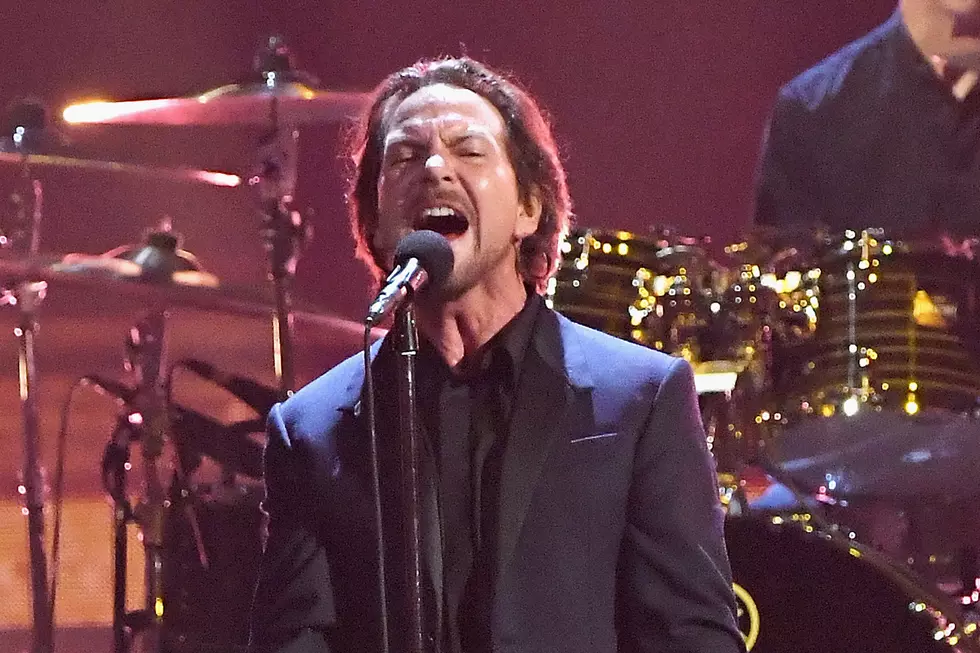
25 Years Ago: Temple of the Dog Give Grunge Its First Supergroup
Temple of the Dog, the one-off collaboration between members of Soundgarden and Pearl Jam, simultaneously predated the grunge explosion and benefited from the aftermath. The group released their self-titled album on April 16, 1991 – four months before Pearl Jam debuted with Ten and five months before Nirvana and Nevermind changed everything.
Outside of the greater Seattle area, however, most fans had no idea the supergroup even existed until the following summer, when A&M Records reissued the album at the height of the grunge hype machine and released a video for "Hunger Strike." The album went on to become a sleeper hit and has since been certified platinum. But when the members of the band came together to record the album in late 1990, moving units was the last thing on their minds and they had no way of knowing what a supergroup Temple of the Dog would seem like in retrospect.
The project was the idea of Soundgarden frontman Chris Cornell, who had been the roommate of charismatic Mother Love Bone singer Andrew Wood. In the wake of Wood’s heroin overdose in March 1990, Cornell decided to record a tribute to his fallen friend and recruited Wood's former bandmates Stone Gossard (guitar) and Jeff Ament (bass) of the fledgling Pearl Jam. They brought along guitarist Mike McCready and their new singer – a shy surfer kid from San Diego named Eddie Vedder – while Cornell enlisted Soundgarden drummer Matt Cameron and named the group Temple of the Dog after a lyric Wood had written for Mother Love Bone's "Man of Golden Words."
Mother Love Bone had been one of the leading lights of the underground Seattle scene that gave birth to grunge, though their sound was less overtly influenced by punk and metal than that of their peers. They were more of a blend of '70s hard rock and glam with Wood’s vocals and magnetic stage presence propelling the band to cult status. Their 1989 debut EP was among the scene’s first major label-affiliated release, but Wood died between the completion of the band's first full-length and its release.
Temple of the Dog tapped into the same ‘70s rock influences that had been such a crucial element of the Mother Love Bone sound. But for all the personality that had been present in Wood’s singing, Cornell’s superhuman pipes were much more versatile, giving the band a broader palette than the Mother Love Bone. And though there's certainly no lack of bone-crushing rockers on Temple of the Dog, there was a far more reflective and less aggressive feel to it than anything Soundgarden had done to that point. In part, Temple of the Dog served as a blueprint for the sound Pearl Jam would soon serve up on their own epochal debut.
On one hand, the album also featured slow-burners (calling them ballads might be a stretch) like “Say Hello 2 Heaven” and “Call Me a Dog,” tunes that bear the influence of Led Zeppelin and the more downtempo moments of Jimi Hendrix. Throughout, Cornell’s soaring tenor glides over plangent but moody riffs for a feel that’s both melancholy and majestic. In some ways, it prefigured some of what Jeff Buckley would be doing in a few years’ time.
On the other hand, cuts like “Reach Down” with its epic guitar firestorm and “Your Savior” bear a hard-rocking roar that put them on a par with Soundgarden's sound from that period. They’re the sort of songs that Wood himself might have presided over in his heyday. Song for song, Temple of the Dog remains one of the most expertly rendered examples of the classic, post-'80s Seattle sound.
But the world wasn’t quite ready for Seattle when the album was initially released on April 16, 1991. Grunge hadn’t broken yet. But a year later, the musical landscape was entirely different. Soundgarden and Pearl Jam had blown up and made Seattle the center of the rock universe while Cornell and Vedder became bona fide rock stars.
When “Hunger Strike” was all over radio and MTV, the innocuous duet between two of the four biggest frontmen in grunge became a historic pairing that underlined the power of both singers’ drastically contrasting styles. Vedder’s deep, glowering delivery was the epitome of moody intensity while Cornell’s stratospheric wail made him the Robert Plant of his generation. Although it's the only song on the album where Vedder provides lead vocals, the combination of the two made for one of the most ubiquitous and defining musical moments of the era.
But just as Temple of the Dog was initially buoyed by the success of Pearl Jam and Soundgarden, it ultimately contributed to both bands’ greater glory – not to mention that of the whole Seattle scene. The project was strictly a one-time deal and although the band made a small handful of live appearances, they never toured. But in the decades that followed, Vedder and Cornell would reconvene for scattered performances at shows like the 2014 Bridge School benefit. The roaring fan reaction to anything from Temple of the Dog demonstrates the lasting appeal of the off-the-cuff affair that's continued to resonate with fans ever since.
The 27 Best Grunge Supergroups + Collaborations
More From Diffuser.fm









